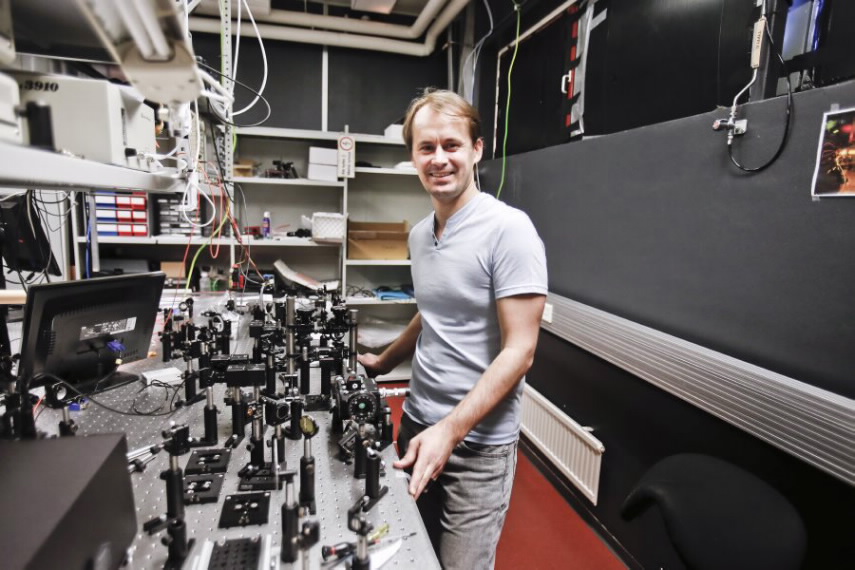8.3.2018
How do laser pulses emerge? A recent research paper co-authored by photonics researchers from Tampere University of Technology (Finland) and published in Nature Photonics demonstrates how laser pulses emerge from noise as if out of nowhere and display complex collapse and oscillation dynamics before settling down to stable operation.
Lasers that emit ultrashort pulses of light are critical components of technologies, such as communications and industrial processing, and have been central to fundamental Nobel Prize-winning research in physics. Although first invented in the 1960s, the exact mechanism whereby lasers actually produce such bright flashes of light has remained elusive. It has not been previously possible to look inside a laser as it is first turned on to see how the laser pulses build up from noise. However, research recently published online in Nature Photonics has demonstrated for the first time how laser pulses emerge out of nowhere from noise and then display complex collapse and oscillation dynamics before eventually settling down to stable regular operation.
“The reason why understanding these lasers has been so difficult is because the pulses they produce are typically of picosecond duration or shorter. Following the complex build-up dynamics of such short pulses for the hundreds, sometimes thousands of bursts before the laser actually stabilizes has been beyond the capability of optical measurement techniques,” says Professor Goëry Genty, who supervised the research in the Laboratory of Photonics at Tampere University of Technology (TUT).
This research was performed in collaboration between the FEMTO-ST Institute in France (CNRS and the University of Bourgogne-Franche-Comté) and the Laboratory of Photonics at TUT. The particular scientific advance that led to the novel findings is the real-time measurement of the laser temporal intensity with sub-picosecond resolution, as well as its optical spectrum with sub-nanometer resolution. By recording both these temporal and spectral properties simultaneously, an advanced computational algorithm can retrieve the complete characteristics of the underlying electromagnetic field.
Aside from providing new insights into how pulsed lasers operate, the research results have important interdisciplinary applications.
“The results provide a very convenient laboratory example of what is known as a “dissipative soliton system” which is a central concept in nonlinear science and also relevant to studies in other fields, such as biology, medicine and possibly even social sciences,” says Professor John. M. Dudley, who led the research at the University of Bourgogne-Franche-Comté.
While reconstructing the evolution of the electromagnetic field, the team observed a wide range of interaction scenarios between dissipative soliton structures emerging from noise.
“The approach we have implemented can operate at low input power levels and high speeds. The results provide a completely new window on previously unseen interactions between emerging dissipative solitons in form of collisions, merging or collapse”, Genty says.
The researchers believe that their results will allow improved design and performance of ultrafast pulsed lasers.
“This is a truly fascinating area of research where studies motivated by questions in fundamental science have the potential to have real practical impact in future photonic technology,” concludes Dudley.
The research was supported by the Academy of Finland (Grants 267576 and 298463), the Agence Nationale de la Recherche project LABEX ACTION ANR11-LABX-0001-01, and the Region of Franche-Comté Project CORPS.
Paper published in Nature Photonics:
P. Ryczkowski, M. Närhi, C. Billet, J.-M. Merolla, G. Genty & J. M. Dudley, “Real-time full-field characterization of transient dissipative soliton dynamics in a mode-locked laser,” Nature Photonics (2018), doi:10.1038/s41566-018-0106-7












